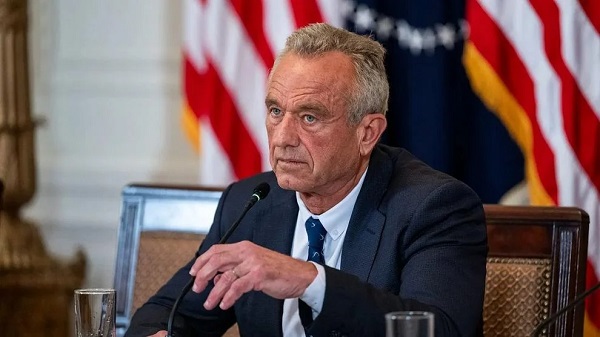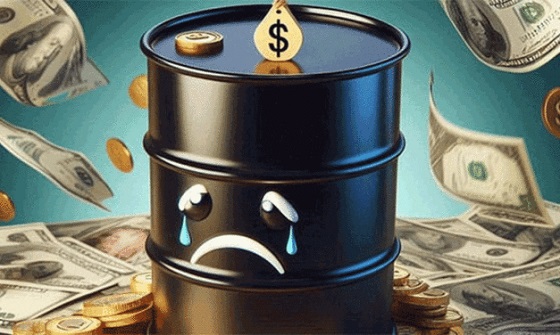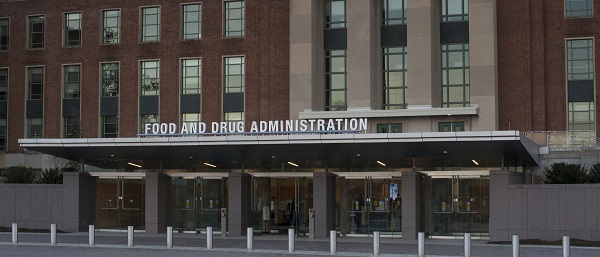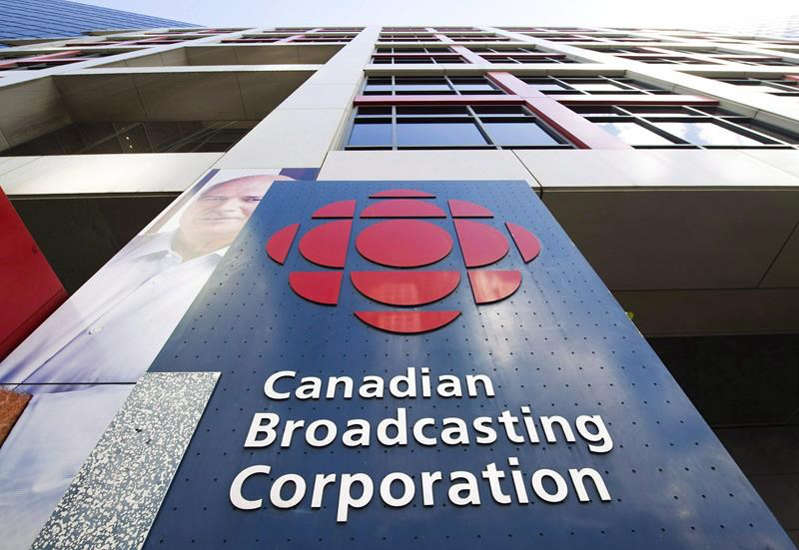Brownstone Institute
A Big Picture Look at the Disastrous Public Health Response to COVID-19

BY
An underlying principle of public health is, or was, to provide the public with accurate information so that they can make good health choices for themselves and their community.
The past 3 years have seen this paradigm turned on its head, with the public’s money being used to deceive and coerce them, forcing them to follow public health dictates. The public has funded their own incarceration and impoverishment through their taxes, with public funds driving the unprecedented nonpharmaceutical, and then pharmaceutical, response to a virus that kills mainly old sick people near the end of their lives.
Children have had their education downgraded, and economies have been mangled, ensuring future generations will also pay. So, what did the public actually pay for?
COVID-19 was not novel, but a variation on previous respiratory disease.
Most healthy people infected with SARS-CoV-2 recover without any intervention, gaining natural immunity which, in the absence of vaccination, generates a more robust and long-lasting protection with less risk for reinfections as compared to individuals protected by vaccination alone. Globally, the infection fatality rate (IFR) of SARS-CoV-2 is about 0.15% and comparable to seasonal influenza (IFR 0,1 %). The IFR of those under twenty years was only 0.0013 %, and highest for those beyond 70 years. The IFR of COVID-19 among community-dwelling elderly is lower than previously reported in elderly overall.
A higher IFR was found in countries with many long-term care facilities, perhaps because exposure tends to occur through other immune-suppressed elderly, rather than immune competent children with lower viral loads. An aging population goes through the process of immunosenescence and increased incidence and severity of infectious diseases is expected.
Severe COVID-19, or COVID-19 Associated ARDS, is a syndrome within the known ARDS spectrum. Acute Respiratory Distress Syndrome (ARDS) and associated cytokine storm has been recognized for more than 50 years. It occurs when a diverse array of triggers causes acute, bilateral pulmonary inflammation and increased capillary permeability leading to acute hypoxemic respiratory failure.
Although supportive care improved the prognosis, mortality and disabling complications in survivors in intensive care are still high, and have remained relatively unchanged in the last 20 years. In 2013 an estimated 2.65 million deaths worldwide were attributed to Acute Respiratory Tract Infection.
As with other ARDS etiologies, people suffering from (COVID-19) ARDS are mostly elderly people with comorbidities including being overweight, hypertension, Type 2 diabetes and cardiovascular diseases, often using multiple medications. Other restrictions on the immune system, such as vitamin D deficiency, put people at increased risk.
As of July 2022, WHO reported over 601 million confirmed cases and over 6.4 million deaths associated with COVID-19 globally. More than half (3.5 million) died after the rollout of the COVID-19 vaccines, though 67.7 % of the world population has received at least one vaccination. The WHO estimates a total of 14.9 million excess deaths in 2020-2021 associated with COVID-19 directly due to the disease or indirectly due to the impact of the public health response on health systems and society.
Footing the bill for the disposal of orthodox public health
Since COVID-19 was recognized in Western countries in early 2020, expenditures on public health in many of them have more than doubled, imposing over $500 billion in monthly costs on the global economy. Some trillions more have been spent on compensation and stimulus packages for those left without income due to the public health response, whilst economies, and therefore future employment opportunities, have been heavily damaged. This is nearly all funded by taxpayers, or borrowed to be funded with interest by the taxpayers of the future.
Politicians and various experts have claimed that the coercive COVID-19 public health policies are the only way to curb COVID-19, though such measures were advised against by the WHO in its pandemic influenza guidelines of 2019. They would increase poverty and inequality, whilst having (still) unproven efficacy.
Citizens have paid the bill via taxes for novel nonpharmaceutical interventions (lockdowns, mask mandates and frequent testing) and repeated vaccinations of immune people with rapidly waning vaccines, whilst seeing their own incomes reduced. The increase in the money supply to cover relief for forced unemployment has driven inflation, contributing to increased food, water, energy, health and insurance costs. These responses have disproportionately harmed low income families.
Governments take over medical management
Early in the pandemic it became clear that intubating a COVID-19 patient could increase long-term harm and mortality. Unfortunately, many hospitals continued a low threshold for the use of ventilators for the fear that other methods of oxygenation would spread the virus. In 2020 the US spent billions of dollars stockpiling unused ventilators.
In many countries a relatively new antiviral drug, remdesivir, developed with State funding, became the first choice of treatment for hospitalized people with COVID-19. The safety and toxicity of the expensive remdesivir was widely disputed. Yet even after the first results of the WHO’s Solidarity study found little or no effect on reducing hospital stay or Covid deaths, the EU continued a €1.2 billion agreement with Gilead for 500,000 treatments and it continued to be prioritized for use in the United States.
Final results of the Solidarity study confirmed the finding of little or no effect. In contrast, the use of cheaper drugs with antiviral activity, like ivermectin and hydroxychloroquine, was suppressed. Although ivermectin is now included in lists of the US National Institutes of Health in August 2022, governments are silent on its use, preferring to transfer funds to Pharma for newer on-patent drugs.
Expanding lockdowns from prisons to society
Lockdowns may prove to be one of the gravest governmental failures of modern times. A cost-benefit analysis of the response to COVID-19 found lockdowns to be far more harmful to public health (at least 5-10 times) in terms of well-being than COVID-19. Significant collateral damage is not unexpected, as mass business closures and restricted movement have affected billions of people globally through poverty, food insecurity, loneliness, unemployment, educational interruption, and interrupted healthcare. What did not make media headlines is the more than 3 million children who have died from malnutrition in the first year of the pandemic. Together with increasing malnutrition, the world is facing rising burdens of child marriage and child labor, developmental and mental problems, poverty, suicide and chronic disease.
Reviews of the effects of lockdowns on COVID-19 mortality concluded there is no broad-based evidence of noticeable COVID-19 benefit. Pandemic models that guided poverty not only overestimated COVID-19 impact but failed to take into account the collateral damage of lockdowns. The sense of fear, anxiety and helplessness brought to families and 2.2 billion children around the globe with removal of future earning capacity and limited access to healthcare will impact lives in an unprecedented manner for generations.
A recent study analyzing the 50 states of the US, with 10 states that had no lockdown impositions, strongly support the hypothesis that lockdowns place a sudden and severe stress burden on vulnerable demographics and were associated with significant increases in death in those states that used lockdowns as a disease control measure.
Mental health problems, noncommunicable inflammatory diseases, cancer and sudden deaths have increased in people across all age groups, indicating millions of people may now have more compromised immune systems. The links between stress/anxiety, ill-health and early death have long been recognized.
Within Western countries, the most deprived people and neighborhoods have higher risks for severe COVID-19, and higher mortality rates. The underprivileged in society are disproportionately affected by infectious diseases due to poverty, malnutrition, chronic stress, depression and anxiety, a deprived immune system and poor access to health-care. Rather than enhancing the resilience of these populations, the public health response has compounded their poverty, removed education opportunities, and so increased their vulnerability to this and future pandemics.
Testing for sake of testing
State investments were made for COVID-19 diagnostics: PCR tests and point-of-care tests including rapid antigen tests. While billions of tests have been used, they are poor in distinguishing infectiousness and inaccuracy provides a false sense of security, with positive results unnecessary driving fear and sick leave.
The WHO had previously, sensibly, advised against contact tracing once extensive community spread is present – people will be infected eventually, and gain immunity. Spending resources to find a small proportion, not possibly sufficient to stop transmission, is epidemiologically pointless. No reason was provided for reversing this orthodox and logical advice.
Hiding faces to pollute the environment
While there is no sound scientific support for the effectiveness of face mask mandates in the community, including children, state governments invested in the availability of free face masks for all citizens. The two published randomized controlled trials of face masks during COVID-19 showed minimal or no impact, while meta-analyses of previous studiesshow no significant efficacy. Yet in the first half of 2020 importation of face masks in the EU grew 1,800 % to €14 billion, while the industry in 2021 was worth $4.58 billion globally. Face masks with microplastics and nanoparticles are now polluting the environment, and potentially increasing the risk of impaired immune systems.
Getting an awkward technology past the regulators
Despite severe COVID-19 being highly concentrated in elderly people since early 2020, with significant comorbidities and strong evidence of effectiveness of post–infection immunity, the WHO stated in early 2021 that vaccinating the global population against COVID-19 is the only long-term strategy to contain the coronavirus crisis; “No one is safe until everyone is safe”. Rising vaccination rates were said to be necessary to improve healthcare, job prospects and future educational plans.
Unfortunately, the peak efficiency of 97% and 96% respectively claimed for the Moderna and Pizer COVID-19 vaccines against COVID hospitalization waned rapidly after vaccination. The 6-month follow-up reports showed no reduction in all-cause mortality. The COVID-19 adenovector vaccines from Astra-Zeneca and Johnson & Johnson showed better protection against mortality but aren’t used for booster vaccinations in most countries due to the risk of vaccine-related side effects.
A recent peer-reviewed article by Fraiman et al. noted excess risk of serious adverse events analyzing the trial data of both mRNA vaccines that points to the need for formal harm-benefit analyses, particularly those that are stratified according to risk of serious COVID-19 outcomes. The authors request the public release of participant level datasets from the sponsoring drug companies, which is still not openly available.
Moreover, the vice president of Pfizer, answered the question of Rob Roos, a Dutch Europarlementarier during the European Commission on October 11, 2022, concerning whether the mRNA vaccine of Pfizer had been tested for prevention of transmission of the virus before the release of the vaccine in 2021. She said no, thus indicating the vaccine promotion and coercion was based on false arguments.
For authorization to use medical interventions the benefits need to outweigh the risks. These mRNA vaccines don’t clearly meet this bar for people under 70 years of age. A recent study by nine health experts from major universities found that per COVID-19 hospitalization prevented in previously uninfected young adults, between 18 and 98 serious adverse events were observed. In Scandinavian countries the use of the Moderna mRNA vaccine has been restricted for the potential risk of heart inflammation in adolescents
Although official reports on the side effects of the COVID-19 vaccines by Public Health Institutes have been limited, there is growing data on myocarditis, menstrual irregularities or the excess of all cause mortality and severe outcomes in vaccinated groups. The recent leakage of Israeli safety data and release of US CDC V safe Data show serious safety problems with COVID-19 vaccines that deliberately need further investigations.
Countries with the highest vaccination rates and strongest coercive measures have experienced high numbers of hospitalization and deaths, while some with a low vaccination rate, including many sub-Saharan countries maintained low Covid-19 mortality. Antibody responses are shown to be lower in elderly people while decreased responses or higher infection rates have occurred after repeated vaccinations. The CDC disclosed just how fast mRNA boosters can fail.
This calls into question the mass all-population vaccination and boosting strategy. Pascal Soriot, the CEO of Astra-Zeneca, has suggested that “booster jabs for healthy people on a yearly basis are a waste of tax money.
A temporary reprieve
On August 11, 2022, the US Centers for Disease Control and Prevention (CDC) stated that the virus now poses significantly lower risk due to high levels of immunity from vaccines and infections. On August 19, it changed its recommendations to reflect this, no longer differentiating between vaccine status or post-infection immunity. President Biden declared in September 2022 “The pandemic is over,” though it remains unclear what this means with ‘emergency’ measures remaining in place.
While the global economy has suffered, this is only clear from a specific standpoint. In contrast to the mass of the population, private companies are involved in the response, particularly in the pharmaceutical, biotech and web-based sectors. These companies have increased their wealth by hundreds of billions of dollars in 2020 and 2021, as did high-net-worth individuals, many of whom were advocating for the response that ensured this.
The beguiling vision of fleecing taxpayers to benefit the private sector
The current COVID-19 response has wiped out the gains from decades of global progress in health and income, especiallyfor women and has exacerbated persistent inequities. Unfortunately, a world that is facing the most serious health crisis in a century and the most serious economic and social crises since the second World War is now also on the hook to fund those who would repeat this.
Together with the WHO, world leaders have now called for a global pandemic preparedness treaty to make this state of affairs more readily repeatable. They justify this call for further diversion of public funds through the harms, financial and other, accrued during the COVID-19 outbreak.
This is driven by a vision that health is a political choice based on solidarity and ‘equity’ to be established in a centralized global response delivered via international organizations including the WHO, UNICEF, Gavi, (a global Vaccine Alliance) and the public-private partnership Coalition for Economic Preparedness Information (CEPI), launched in 2017 at the WEF by Bill Gates, the Wellcome Trust, Norwegian Government and others. Finance institutions, including the World Bank, have now stepped in to accelerate the growth of this burgeoning pandemic industry. A new World Bank-hosted Financial Intermediary Fund (FIF) for pandemic prevention, preparedness and response was installed at the G20 Health Ministerial Meeting in June 2022.
A real concern is growing that the new vision of drug and vaccine approval by the FDA and EMA will expand a commercialized market driven by drug manufacturers at the expense of rigorous independent scientific and regulatory review. This risks irreparable harm for many people while boosting the profits of pharmaceutical and biotech companies. Prescribed medications are already estimated to be the third most common contributor to death globally after heart disease and cancer.
Despite their stated intent, the investments in COVID-19 vaccinations and nonpharmaceutical interventions of the past three years have not improved human capital, economic and societal performance. Moreover illnesses, disabilities and mortality show steep rises in the working age group (25-64 years) as observed by insurance companies. Predictions by consultancy firms of the support Covid-19 vaccinations would provide to the economy have been unrealistic. Countries are now facing shortages of healthcare workers in part due to vaccine mandates, reducing healthcare access to people with ill-health who have paid insurance and tax money for healthcare. It might even result in bankruptcy of hospitals.
Good Health, the most precious asset of life
The CEO of CEPI stated in an interview with McKinsey that “The emergent issue of waning immunity and the threat posed by the evolution of the virus tell us that we need to produce broader and more enduring immune responses.” Mass surveillance, lockdowns, wearing face masks and poorly effective COVID-19 vaccines have contributed to chronic stress, fear and anxiety that reduce the resilience of immunity. Unfortunately, when the immune system (immunosenescence) is weakened vaccinations are also less able to generate effective protection.
More state investments in frequent vaccinations, mass distribution of vaccines, developing new vaccines within 100 days, development of simulating models, and more clinical trials will be poor alternatives to strengthen the underlying immune systems through a life in freedom with high social capital, a healthy diet, education, sports, play, social interactions, equity in decision-making and fair earnings.
Health is key for resilient economies worldwide. The relationship between health and the economy is bidirectional, whereby economic growth enables funding in investments that improve health; and a healthy population contributes to and enhances an economy. Therefore, public and private investments in health for all needs to transform from maximizing value for money to positive cumulative impacts on people’s lives.
Optimizing health is the ultimate goal and a human right. The global response to the coronavirus pandemic has revealed an ethical crisis in public health, in which the pre-pandemic norms of public health ethics have been cast aside.
This has wrecked health, human rights and economies, whilst the people public health was supposed to serve it had to pay for its implementation, and will pay for its harms. It will be a long way back, and recovery will require public health to return to its servant nature, and leave the limelight where it caused such disaster.
Brownstone Institute
The Unmasking of Vaccine Science

From the Brownstone Institute
By
I recently purchased Aaron Siri’s new book Vaccines, Amen. As I flipped though the pages, I noticed a section devoted to his now-famous deposition of Dr Stanley Plotkin, the “godfather” of vaccines.
I’d seen viral clips circulating on social media, but I had never taken the time to read the full transcript — until now.
Siri’s interrogation was methodical and unflinching…a masterclass in extracting uncomfortable truths.
A Legal Showdown
In January 2018, Dr Stanley Plotkin, a towering figure in immunology and co-developer of the rubella vaccine, was deposed under oath in Pennsylvania by attorney Aaron Siri.
The case stemmed from a custody dispute in Michigan, where divorced parents disagreed over whether their daughter should be vaccinated. Plotkin had agreed to testify in support of vaccination on behalf of the father.
What followed over the next nine hours, captured in a 400-page transcript, was extraordinary.
Plotkin’s testimony revealed ethical blind spots, scientific hubris, and a troubling indifference to vaccine safety data.
He mocked religious objectors, defended experiments on mentally disabled children, and dismissed glaring weaknesses in vaccine surveillance systems.
A System Built on Conflicts
From the outset, Plotkin admitted to a web of industry entanglements.
He confirmed receiving payments from Merck, Sanofi, GSK, Pfizer, and several biotech firms. These were not occasional consultancies but long-standing financial relationships with the very manufacturers of the vaccines he promoted.
Plotkin appeared taken aback when Siri questioned his financial windfall from royalties on products like RotaTeq, and expressed surprise at the “tone” of the deposition.
Siri pressed on: “You didn’t anticipate that your financial dealings with those companies would be relevant?”
Plotkin replied: “I guess, no, I did not perceive that that was relevant to my opinion as to whether a child should receive vaccines.”
The man entrusted with shaping national vaccine policy had a direct financial stake in its expansion, yet he brushed it aside as irrelevant.
Contempt for Religious Dissent
Siri questioned Plotkin on his past statements, including one in which he described vaccine critics as “religious zealots who believe that the will of God includes death and disease.”
Siri asked whether he stood by that statement. Plotkin replied emphatically, “I absolutely do.”
Plotkin was not interested in ethical pluralism or accommodating divergent moral frameworks. For him, public health was a war, and religious objectors were the enemy.
He also admitted to using human foetal cells in vaccine production — specifically WI-38, a cell line derived from an aborted foetus at three months’ gestation.
Siri asked if Plotkin had authored papers involving dozens of abortions for tissue collection. Plotkin shrugged: “I don’t remember the exact number…but quite a few.”
Plotkin regarded this as a scientific necessity, though for many people — including Catholics and Orthodox Jews — it remains a profound moral concern.
Rather than acknowledging such sensitivities, Plotkin dismissed them outright, rejecting the idea that faith-based values should influence public health policy.
That kind of absolutism, where scientific aims override moral boundaries, has since drawn criticism from ethicists and public health leaders alike.
As NIH director Jay Bhattacharya later observed during his 2025 Senate confirmation hearing, such absolutism erodes trust.
“In public health, we need to make sure the products of science are ethically acceptable to everybody,” he said. “Having alternatives that are not ethically conflicted with foetal cell lines is not just an ethical issue — it’s a public health issue.”
Safety Assumed, Not Proven
When the discussion turned to safety, Siri asked, “Are you aware of any study that compares vaccinated children to completely unvaccinated children?”
Plotkin replied that he was “not aware of well-controlled studies.”
Asked why no placebo-controlled trials had been conducted on routine childhood vaccines such as hepatitis B, Plotkin said such trials would be “ethically difficult.”
That rationale, Siri noted, creates a scientific blind spot. If trials are deemed too unethical to conduct, then gold-standard safety data — the kind required for other pharmaceuticals — simply do not exist for the full childhood vaccine schedule.
Siri pointed to one example: Merck’s hepatitis B vaccine, administered to newborns. The company had only monitored participants for adverse events for five days after injection.
Plotkin didn’t dispute it. “Five days is certainly short for follow-up,” he admitted, but claimed that “most serious events” would occur within that time frame.
Siri challenged the idea that such a narrow window could capture meaningful safety data — especially when autoimmune or neurodevelopmental effects could take weeks or months to emerge.
Siri pushed on. He asked Plotkin if the DTaP and Tdap vaccines — for diphtheria, tetanus and pertussis — could cause autism.
“I feel confident they do not,” Plotkin replied.
But when shown the Institute of Medicine’s 2011 report, which found the evidence “inadequate to accept or reject” a causal link between DTaP and autism, Plotkin countered, “Yes, but the point is that there were no studies showing that it does cause autism.”
In that moment, Plotkin embraced a fallacy: treating the absence of evidence as evidence of absence.
“You’re making assumptions, Dr Plotkin,” Siri challenged. “It would be a bit premature to make the unequivocal, sweeping statement that vaccines do not cause autism, correct?”
Plotkin relented. “As a scientist, I would say that I do not have evidence one way or the other.”
The MMR
The deposition also exposed the fragile foundations of the measles, mumps, and rubella (MMR) vaccine.
When Siri asked for evidence of randomised, placebo-controlled trials conducted before MMR’s licensing, Plotkin pushed back: “To say that it hasn’t been tested is absolute nonsense,” he said, claiming it had been studied “extensively.”
Pressed to cite a specific trial, Plotkin couldn’t name one. Instead, he gestured to his own 1,800-page textbook: “You can find them in this book, if you wish.”
Siri replied that he wanted an actual peer-reviewed study, not a reference to Plotkin’s own book. “So you’re not willing to provide them?” he asked. “You want us to just take your word for it?”
Plotkin became visibly frustrated.
Eventually, he conceded there wasn’t a single randomised, placebo-controlled trial. “I don’t remember there being a control group for the studies, I’m recalling,” he said.
The exchange foreshadowed a broader shift in public discourse, highlighting long-standing concerns that some combination vaccines were effectively grandfathered into the schedule without adequate safety testing.
In September this year, President Trump called for the MMR vaccine to be broken up into three separate injections.
The proposal echoed a view that Andrew Wakefield had voiced decades earlier — namely, that combining all three viruses into a single shot might pose greater risk than spacing them out.
Wakefield was vilified and struck from the medical register. But now, that same question — once branded as dangerous misinformation — is set to be re-examined by the CDC’s new vaccine advisory committee, chaired by Martin Kulldorff.
The Aluminium Adjuvant Blind Spot
Siri next turned to aluminium adjuvants — the immune-activating agents used in many childhood vaccines.
When asked whether studies had compared animals injected with aluminium to those given saline, Plotkin conceded that research on their safety was limited.
Siri pressed further, asking if aluminium injected into the body could travel to the brain. Plotkin replied, “I have not seen such studies, no, or not read such studies.”
When presented with a series of papers showing that aluminium can migrate to the brain, Plotkin admitted he had not studied the issue himself, acknowledging that there were experiments “suggesting that that is possible.”
Asked whether aluminium might disrupt neurological development in children, Plotkin stated, “I’m not aware that there is evidence that aluminum disrupts the developmental processes in susceptible children.”
Taken together, these exchanges revealed a striking gap in the evidence base.
Compounds such as aluminium hydroxide and aluminium phosphate have been injected into babies for decades, yet no rigorous studies have ever evaluated their neurotoxicity against an inert placebo.
This issue returned to the spotlight in September 2025, when President Trump pledged to remove aluminium from vaccines, and world-leading researcher Dr Christopher Exley renewed calls for its complete reassessment.
A Broken Safety Net
Siri then turned to the reliability of the Vaccine Adverse Event Reporting System (VAERS) — the primary mechanism for collecting reports of vaccine-related injuries in the United States.
Did Plotkin believe most adverse events were captured in this database?
“I think…probably most are reported,” he replied.
But Siri showed him a government-commissioned study by Harvard Pilgrim, which found that fewer than 1% of vaccine adverse events are reported to VAERS.
“Yes,” Plotkin said, backtracking. “I don’t really put much faith into the VAERS system…”
Yet this is the same database officials routinely cite to claim that “vaccines are safe.”
Ironically, Plotkin himself recently co-authored a provocative editorial in the New England Journal of Medicine, conceding that vaccine safety monitoring remains grossly “inadequate.”
Experimenting on the Vulnerable
Perhaps the most chilling part of the deposition concerned Plotkin’s history of human experimentation.
“Have you ever used orphans to study an experimental vaccine?” Siri asked.
“Yes,” Plotkin replied.
“Have you ever used the mentally handicapped to study an experimental vaccine?” Siri asked.
“I don’t recollect…I wouldn’t deny that I may have done so,” Plotkin replied.
Siri cited a study conducted by Plotkin in which he had administered experimental rubella vaccines to institutionalised children who were “mentally retarded.”
Plotkin stated flippantly, “Okay well, in that case…that’s what I did.”
There was no apology, no sign of ethical reflection — just matter-of-fact acceptance.
Siri wasn’t done.
He asked if Plotkin had argued that it was better to test on those “who are human in form but not in social potential” rather than on healthy children.
Plotkin admitted to writing it.
Siri established that Plotkin had also conducted vaccine research on the babies of imprisoned mothers, and on colonised African populations.
Plotkin appeared to suggest that the scientific value of such studies outweighed the ethical lapses—an attitude that many would interpret as the classic ‘ends justify the means’ rationale.
But that logic fails the most basic test of informed consent. Siri asked whether consent had been obtained in these cases.
“I don’t remember…but I assume it was,” Plotkin said.
Assume?
This was post-Nuremberg research. And the leading vaccine developer in America couldn’t say for sure whether he had properly informed the people he experimented on.
In any other field of medicine, such lapses would be disqualifying.
A Casual Dismissal of Parental Rights
Plotkin’s indifference to experimenting on disabled children didn’t stop there.
Siri asked whether someone who declined a vaccine due to concerns about missing safety data should be labelled “anti-vax.”
Plotkin replied, “If they refused to be vaccinated themselves or refused to have their children vaccinated, I would call them an anti-vaccination person, yes.”
Plotkin was less concerned about adults making that choice for themselves, but he had no tolerance for parents making those choices for their own children.
“The situation for children is quite different,” said Plotkin, “because one is making a decision for somebody else and also making a decision that has important implications for public health.”
In Plotkin’s view, the state held greater authority than parents over a child’s medical decisions — even when the science was uncertain.
The Enabling of Figures Like Plotkin
The Plotkin deposition stands as a case study in how conflicts of interest, ideology, and deference to authority have corroded the scientific foundations of public health.
Plotkin is no fringe figure. He is celebrated, honoured, and revered. Yet he promotes vaccines that have never undergone true placebo-controlled testing, shrugs off the failures of post-market surveillance, and admits to experimenting on vulnerable populations.
This is not conjecture or conspiracy — it is sworn testimony from the man who helped build the modern vaccine program.
Now, as Health Secretary Robert F. Kennedy, Jr. reopens long-dismissed questions about aluminium adjuvants and the absence of long-term safety studies, Plotkin’s once-untouchable legacy is beginning to fray.
Republished from the author’s Substack
Brownstone Institute
Bizarre Decisions about Nicotine Pouches Lead to the Wrong Products on Shelves

From the Brownstone Institute
A walk through a dozen convenience stores in Montgomery County, Pennsylvania, says a lot about how US nicotine policy actually works. Only about one in eight nicotine-pouch products for sale is legal. The rest are unauthorized—but they’re not all the same. Some are brightly branded, with uncertain ingredients, not approved by any Western regulator, and clearly aimed at impulse buyers. Others—like Sweden’s NOAT—are the opposite: muted, well-made, adult-oriented, and already approved for sale in Europe.
Yet in the United States, NOAT has been told to stop selling. In September 2025, the Food and Drug Administration (FDA) issued the company a warning letter for offering nicotine pouches without marketing authorization. That might make sense if the products were dangerous, but they appear to be among the safest on the market: mild flavors, low nicotine levels, and recyclable paper packaging. In Europe, regulators consider them acceptable. In America, they’re banned. The decision looks, at best, strange—and possibly arbitrary.
What the Market Shows
My October 2025 audit was straightforward. I visited twelve stores and recorded every distinct pouch product visible for sale at the counter. If the item matched one of the twenty ZYN products that the FDA authorized in January, it was counted as legal. Everything else was counted as illegal.
Two of the stores told me they had recently received FDA letters and had already removed most illegal stock. The other ten stores were still dominated by unauthorized products—more than 93 percent of what was on display. Across all twelve locations, about 12 percent of products were legal ZYN, and about 88 percent were not.
The illegal share wasn’t uniform. Many of the unauthorized products were clearly high-nicotine imports with flashy names like Loop, Velo, and Zimo. These products may be fine, but some are probably high in contaminants, and a few often with very high nicotine levels. Others were subdued, plainly meant for adult users. NOAT was a good example of that second group: simple packaging, oat-based filler, restrained flavoring, and branding that makes no effort to look “cool.” It’s the kind of product any regulator serious about harm reduction would welcome.
Enforcement Works
To the FDA’s credit, enforcement does make a difference. The two stores that received official letters quickly pulled their illegal stock. That mirrors the agency’s broader efforts this year: new import alerts to detain unauthorized tobacco products at the border (see also Import Alert 98-06), and hundreds of warning letters to retailers, importers, and distributors.
But effective enforcement can’t solve a supply problem. The list of legal nicotine-pouch products is still extremely short—only a narrow range of ZYN items. Adults who want more variety, or stores that want to meet that demand, inevitably turn to gray-market suppliers. The more limited the legal catalog, the more the illegal market thrives.
Why the NOAT Decision Appears Bizarre
The FDA’s own actions make the situation hard to explain. In January 2025, it authorized twenty ZYN products after finding that they contained far fewer harmful chemicals than cigarettes and could help adult smokers switch. That was progress. But nine months later, the FDA has approved nothing else—while sending a warning letter to NOAT, arguably the least youth-oriented pouch line in the world.
The outcome is bad for legal sellers and public health. ZYN is legal; a handful of clearly risky, high-nicotine imports continue to circulate; and a mild, adult-market brand that meets European safety and labeling rules is banned. Officially, NOAT’s problem is procedural—it lacks a marketing order. But in practical terms, the FDA is punishing the very design choices it claims to value: simplicity, low appeal to minors, and clean ingredients.
This approach also ignores the differences in actual risk. Studies consistently show that nicotine pouches have far fewer toxins than cigarettes and far less variability than many vapes. The biggest pouch concerns are uneven nicotine levels and occasional traces of tobacco-specific nitrosamines, depending on manufacturing quality. The serious contamination issues—heavy metals and inconsistent dosage—belong mostly to disposable vapes, particularly the flood of unregulated imports from China. Treating all “unauthorized” products as equally bad blurs those distinctions and undermines proportional enforcement.
A Better Balance: Enforce Upstream, Widen the Legal Path
My small Montgomery County survey suggests a simple formula for improvement.
First, keep enforcement targeted and focused on suppliers, not just clerks. Warning letters clearly change behavior at the store level, but the biggest impact will come from auditing distributors and importers, and stopping bad shipments before they reach retail shelves.
Second, make compliance easy. A single-page list of authorized nicotine-pouch products—currently the twenty approved ZYN items—should be posted in every store and attached to distributor invoices. Point-of-sale systems can block barcodes for anything not on the list, and retailers could affirm, once a year, that they stock only approved items.
Third, widen the legal lane. The FDA launched a pilot program in September 2025 to speed review of new pouch applications. That program should spell out exactly what evidence is needed—chemical data, toxicology, nicotine release rates, and behavioral studies—and make timely decisions. If products like NOAT meet those standards, they should be authorized quickly. Legal competition among adult-oriented brands will crowd out the sketchy imports far faster than enforcement alone.
The Bottom Line
Enforcement matters, and the data show it works—where it happens. But the legal market is too narrow to protect consumers or encourage innovation. The current regime leaves a few ZYN products as lonely legal islands in a sea of gray-market pouches that range from sensible to reckless.
The FDA’s treatment of NOAT stands out as a case study in inconsistency: a quiet, adult-focused brand approved in Europe yet effectively banned in the US, while flashier and riskier options continue to slip through. That’s not a public-health victory; it’s a missed opportunity.
If the goal is to help adult smokers move to lower-risk products while keeping youth use low, the path forward is clear: enforce smartly, make compliance easy, and give good products a fair shot. Right now, we’re doing the first part well—but failing at the second and third. It’s time to fix that.
-

 Business2 days ago
Business2 days agoSome Of The Wackiest Things Featured In Rand Paul’s New Report Alleging $1,639,135,969,608 In Gov’t Waste
-

 Energy2 days ago
Energy2 days ago‘The electric story is over’
-

 Alberta2 days ago
Alberta2 days agoOttawa-Alberta agreement may produce oligopoly in the oilsands
-

 Energy2 days ago
Energy2 days agoWestern Canada’s supply chain for Santa Claus
-

 Energy2 days ago
Energy2 days agoThe Top News Stories That Shaped Canadian Energy in 2025 and Will Continue to Shape Canadian Energy in 2026
-

 International2 days ago
International2 days ago$2.6 million raised for man who wrestled shotgun from Bondi Beach terrorist
-

 armed forces16 hours ago
armed forces16 hours agoRemembering Afghanistan and the sacrifices of our military families
-

 Fraser Institute16 hours ago
Fraser Institute16 hours agoHow to talk about housing at the holiday dinner table














